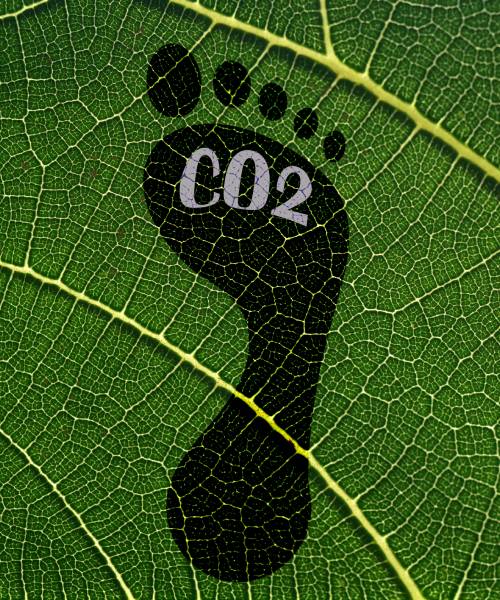Ecological footprint
Ecological footprint
It takes into account the factors of a certain lifestyle to assess whether they could be harmful to the environment.

Ecological footprint
A commitment for everyone
Reading time: 9 min
Have you ever wondered how many croplands, grazing lands, or forests are needed to satisfy your lifestyle? This question can be answered by measuring the ecological footprint of each person. The decisions we make have a direct impact on the planet, from the diet we follow to the means of transportation we use. On this page, we explain to you what the ecological footprint is and how to measure it. We also give you a few tips on some sustainable habits that you can adopt to reduce it.
What is an ecological footprint?
An environmental footprint is an international sustainability indicator that, as defined by its authors, measures "the area of biologically productive land needed to produce the resources consumed and assimilate the waste generated."
An ecological footprint is used to calculate the degree of impact our lifestyle has on the environment. Hence, it's also known as environmental footprint.
The concept of ecological footprint was developed in 1996 by William Rees, a university professor, biologist, and ecologist, and Mathis Wackernagel, mechanical engineer and current president of the Global Footprint Network. The goal was not just to arrive at a formula for calculating the ecological footprint of each human activity, but also to compare it to the Earth's biocapacity. This would make it possible to obtain a realistic picture of the natural resources we have available and how they're being consumed.
What is the ecological footprint used for?
After having defined the ecological footprint, we know that it's an important indicator for measuring sustainability. Therefore, knowing what it is used for helps us understand what happens if we extract more natural resources from the planet than can be regenerated naturally.
The purpose of this indicator is to measure the productive land used and to determine if the planet is capable of taking on the waste that is generated afterwards. Currently, this balance indicates that resource consumption and waste production are higher than the planet's biocapacity, hence the importance of measures aimed at caring for the environment and preserving natural resources.
Now that we know this information, we have to subtract the resources consumed by each individual from the resources generated by the planet in a single year. The result will be the global hectares (hag) required by each person to satisfy their lifestyle and assimilate the waste it generates.
If after doing this calculation the result is an ecological deficit, or also known as ecological debt, it'll mean that currently there's a lack of biological areas to meet the needs of human beings. You can calculate your ecological footprint through the Global Footprint Network.
Ecological footprint
It takes into account the factors of a certain lifestyle to assess whether they could be harmful to the environment.

Carbon footprint
It measures the production of Greenhouse Gases (GHG), in other words, the gases that absorb and emit infrared radiation.

Water footprint
It's used to calculate the total volume of fresh water needed to produce the goods and services demanded by society.
These three indicators are interconnected and offer us a global representation of the current situation to make more environmentally-friendly decisions.
Tips for reducing our ecological footprint
As we have seen, an ecological footprint is directly related to each individual's lifestyle. Therefore, the commitment of all members of society, whether it be as a group or individually, is fundamental. Improving the way we produce, choose, and consume is the first step in reducing our ecological footprint.
By consuming responsibly and putting more sustainable habits into practice, we can reduce it considerably. Here are some tips for making it happen: